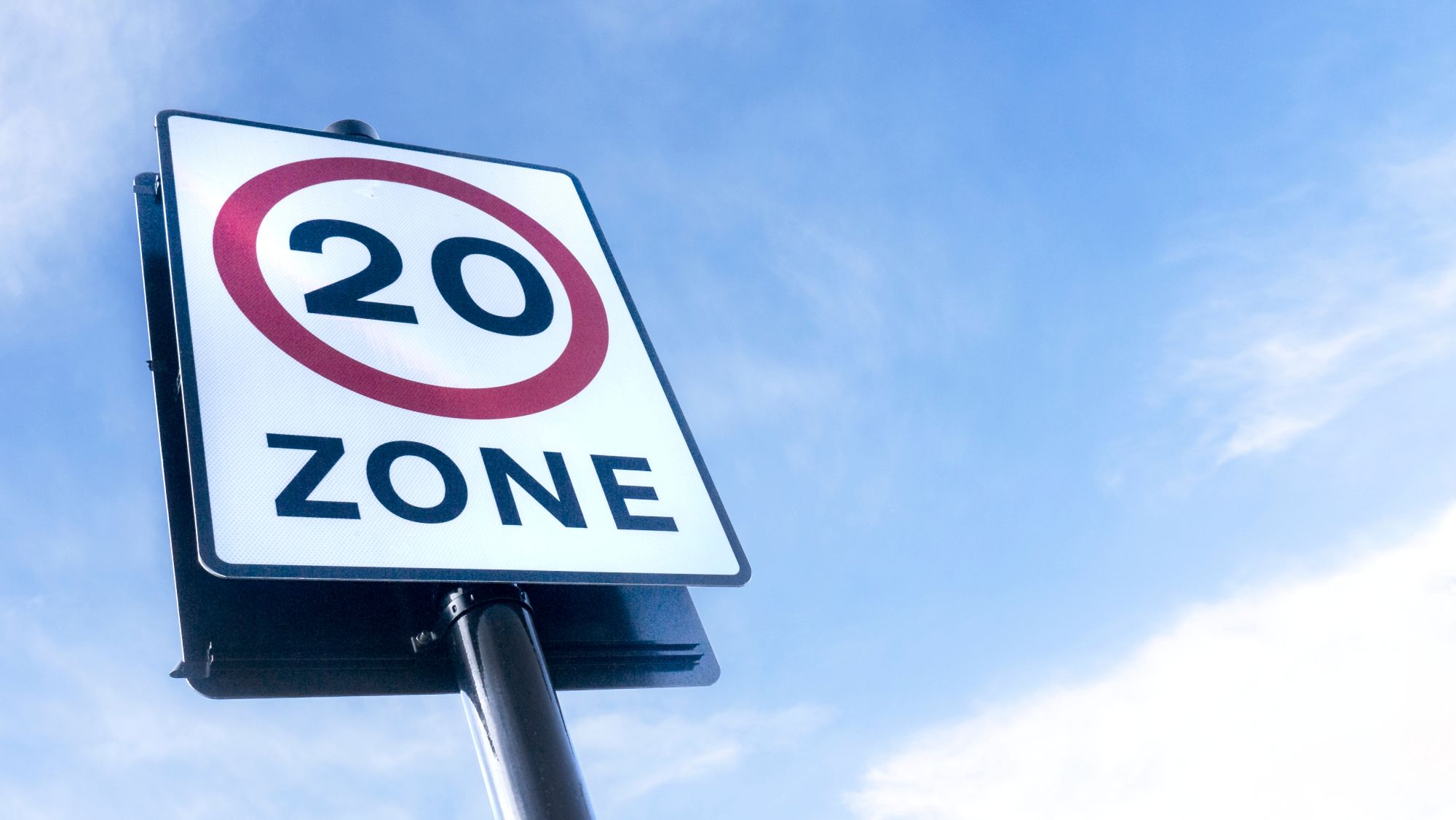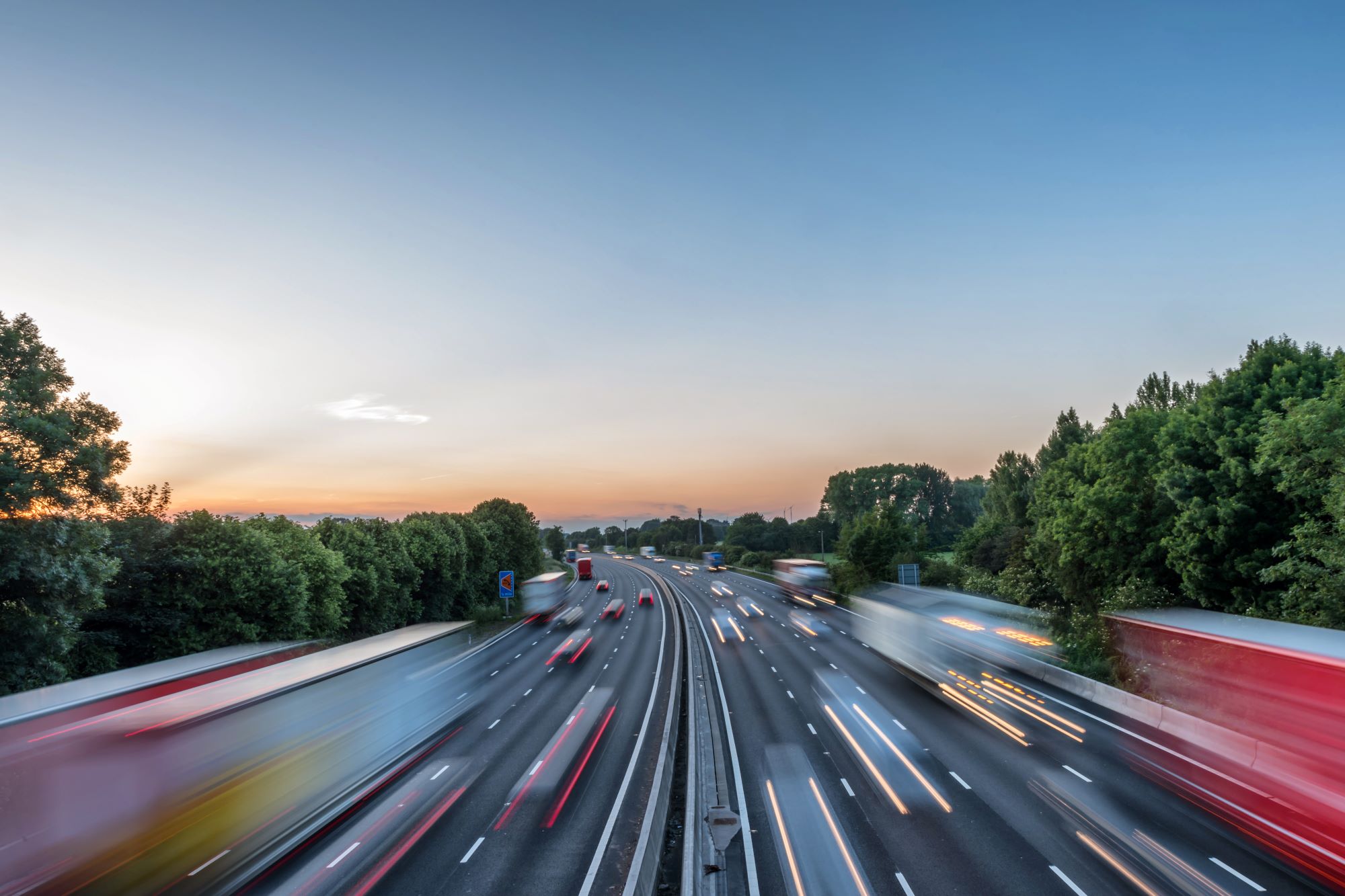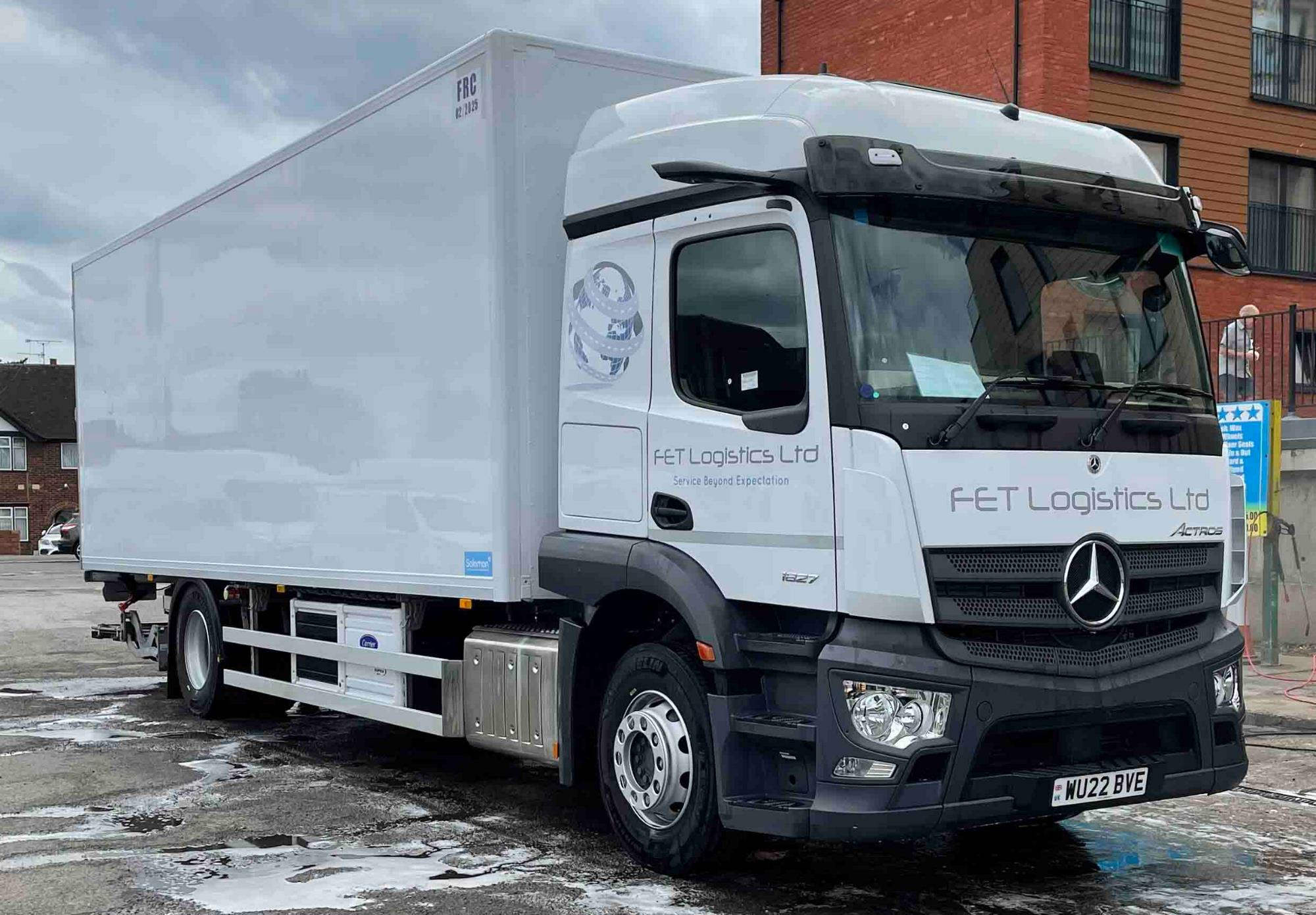
Susie Jones
Jaké jsou důsledky omezení rychlosti na 20 km/h pro vozové parky?
Vytvořeno: 16.04.2025
•
Aktualizováno: 16.04.2025
V roce 2023 se 188 těžká nákladní vozidla podílela na srážkách, které měly za následek smrtelné zranění, což je sice pokles oproti roku 2022, ale přesto jde o znepokojivou statistiku. Tyto nehody mohly být způsobeny několika faktory, například únavou řidiče, špatnou údržbou vozidla, povětrnostními podmínkami nebo jednáním jiných účastníků silničního provozu. Údaje charitativní organizace Brake zabývající se bezpečností silničního provozu však naznačují, že 58 % úmrtí v souvislosti s dopravními nehodami mělo jako faktor bezpečnosti silničního provozu uvedenou rychlost. V tomto blogu se budeme zabývat tím, jak by zavedení omezení rychlosti na 20 mil za hodinu mohlo ovlivnit provoz vozového parku a snížit počet úmrtí.
Kde dochází k nehodám těžkých nákladních vozidel?
Podle EROS došlo pouze k 10 % srážek nákladních vozidel na dálnici - zbylých 90 % se stalo spíše na městské nebo venkovské silnici. Venkovské silnice představují pro řidiče nákladních vozidel úzký prostor, ostré zatáčky a interakce se zranitelnými účastníky silničního provozu, jako jsou cyklisté a chodci, což zvyšuje pravděpodobnost nehod. Městské oblasti představují pro řidiče nákladních vozidel větší riziko kvůli hustšímu provozu, častému zastavování, aktivitě chodců a složitému uspořádání silnic - v kombinaci s nepředvídatelností městských silnic jsou pro řidiče nákladních vozidel větším rizikem.
Dopad zón s rychlostí 20 km/h.
Čísla zveřejněná velšskou vládou ukázala, že v roce 2024 bude na městských silnicích o 100 obětí méně než ve stejném období roku 2023 před zavedením omezení rychlosti na 20 mil za hodinu v městských oblastech.
Tento systém podporují organizace jako Brake a Cycling UK a nyní specialisté na správu vozového parku FleetCheck vyzývají dopravní společnosti, aby se k němu připojily. Tvrdí, že přechod z rychlosti 30 km/h na rychlost 20 km/h bude mít minimální dopad na efektivitu vozového parku, a důrazně podporují myšlenku, že by každoročně zachránil lidské životy.

Co si o omezení rychlosti na 20 km/h myslí vozový park a řidiči?
Podle společnosti FleetCheck mají dopravci z této iniciativy smíšené pocity. Někteří považovali změny za překážku efektivity - tvrdili, že nižší rychlostní limity mohou některé vozové parky donutit snížit počet dodávek, které mohou v daném období uskutečnit.
Řidiči na stránkách SNAP na sociálních sítích měli z návrhu silné pocity. Jeden z řidičů uvedl:
"Kdo podpoří další zóny s rychlostí 20 km/h? Problémem je celá úroveň jízdy. Od té doby, co jsme se vrátili z uzavírky, je úroveň jízdy ďábelská, a to včetně osobních aut, dodávek i nákladních vozů."
Nálada na sociálních sítích zůstala stejná, mnozí změnu nepodpořili.
Výhody většího počtu zón s rychlostí 20 km/h.
Zóny se sníženou rychlostí přinášejí řidičům nákladních vozidel několik výhod.
Nižší rychlost zlepšuje reakční dobu a zkracuje brzdnou dráhu, což usnadňuje vyhýbání se kolizím - zejména v městských oblastech.
Nákladní vozidla se při snížených rychlostních limitech pravděpodobněji méně opotřebovávají.
Překážky, kterým by mohly čelit společnosti provozující vozový park.
Jak již bylo zmíněno, některé flotilové společnosti se obávají, že nižší rychlostní limity by mohly snížit počet dodávek, které by mohly v daném období uskutečnit. Vozové parky by se také mohly potýkat s následujícími problémy:
Delší doba přepravy: ovlivňuje časově citlivé dodávky, což má dopad na plánování a očekávání zákazníků.
Plánování tras: společnosti možná budou muset upravit trasy tak, aby zohlednily nižší rychlosti.
Dodržování předpisů: klíčové budou investice do dalšího školení řidičů, aby se zajistilo dodržování nových rychlostních limitů.
Přestože tyto problémy mohou pro vozové parky představovat další výzvy, mnohé z nich lze aktivně zvládnout. Mnozí tvrdí, že dlouhodobé bezpečnostní výhody převažují nad překážkami.

Čísla mluví sama za sebe.
V revidované kampani s názvem Nebezpečné dálnice identifikoval SNAP nejnebezpečnější místa na GB. Ponořili jsme se hlouběji, abychom zjistili, kterým silnicím by snížení rychlosti prospělo.
SNAP zjistil, že nejnebezpečnější silnice jsou na jihovýchodě země. Kent má nejnebezpečnější silnice v Británii a navrhuje cíl nulového počtu úmrtí na silnicích na kentské dálniční síti do roku 2050. Které silnice jsou nejznepokojivější?
A254: Krátká silnice měřící pouhé čtyři míle byla v roce 2018 vyhlášena nejrizikovější britskou silnicí. Zpráva vyzdvihuje úsek A254 mezi křižovatkou s A28 u Margate a křižovatkou s A255 u Ramsgate. Omezení rychlosti na tomto úseku se pohybuje mezi 30 a 40 km/h - zastavěné oblasti a silný dopravní proud z přístavu Dover činí tuto silnici obzvláště nebezpečnou pro cyklisty, chodce a další účastníky silničního provozu. Mohlo by tomuto úseku silnice prospět snížení rychlosti?
A252: A252 je proslulá vysokou nehodovostí a měří 8,7 km. V roce 2020 byly zahájeny práce na snížení počtu a závažnosti nehod, mezi změny patří snížení rychlosti z 60 km/h na 50 km/h na tomto úseku, s výjimkou míst, kde platí nižší limity. Stačí to však k tomu, aby se silnice zbavila pověsti jedné z nejhorších v Británii?
Na prvních místech žebříčku se umístily také hrabství Surrey a Essex, kde se za posledních pět let stalo dohromady 30 378 nehod. Vysokou nehodovost v hrabství Surrey lze přičíst kombinaci obydlených měst a venkovských silnic. Blízkost Londýna a hlavních dálnic má za následek větší počet kolizí.
Dálnice M25: Dálnice M25, známá také jako londýnská obchvatová dálnice, je jednou z nejvytíženějších britských silnic a zároveň druhou nejdelší okružní silnicí v Evropě. V letech 2007-2016 bylo zaznamenáno 7 673 nehod a 80 úmrtí. Jako na klíčové dálnici by byla úprava rychlosti na pouhých 20 mil za hodinu směšná. Prospěly by však M25 zóny s omezenou rychlostí?
A3: Silnice A3, která měří 67 kilometrů, může být náročná na řízení kvůli vysoké intenzitě dopravy, rychlostním omezením a úsekům se špatným stavem vozovky.
Často kladené otázky
Jaká je maximální povolená rychlost pro nákladní vozidla?
Řidiči nákladních vozidel musí dodržovat přísné rychlostní předpisy. Tato omezení jsou stanovena s ohledem na velikost, hmotnost a brzdnou kapacitu nákladního vozidla.
Jednosměrné silnice: Nákladní vozidlo nad 7,5 tuny může jet maximálně rychlostí 50 km/h.
Dvouproudé silnice: Maximální povolená rychlost pro nákladní vozidla nad 7,5 tuny je 60 km/h.
Dálnice: Řidiči nákladních vozidel nesmí na dálnici překročit rychlost 60 km/h.
Předpisy pro omezovače rychlosti ve Velké Británii Ve Velké Británii musí být do každého nákladního vozidla nainstalováno zařízení omezující rychlost, které omezuje maximální rychlost, kterou může vozidlo jet.
Právní požadavky ve Velké Británii: Všechna nákladní vozidla nad 3,5 tuny musí mít omezovač rychlosti nastavený na 56 km/h.
Jak fungují: Omezovače rychlosti omezují množství paliva dodávaného do motoru, jakmile vozidlo dosáhne nastavené rychlosti - řidič tak nemůže překročit limit.
Potřebuje soukromé nákladní vozidlo omezovač rychlosti?
Soukromý nákladní automobil nevyžaduje omezovač rychlosti, pokud není používán pro komerční účely. Pokud vaše vozidlo nepotřebuje omezovač rychlosti, musíte to oznámit při technické prohlídce vyplněním formuláře [prohlášení o omezovači rychlosti] (https://www.gov.uk/government/publications/hgv-speed-limiter-exemption-declaration-form).



